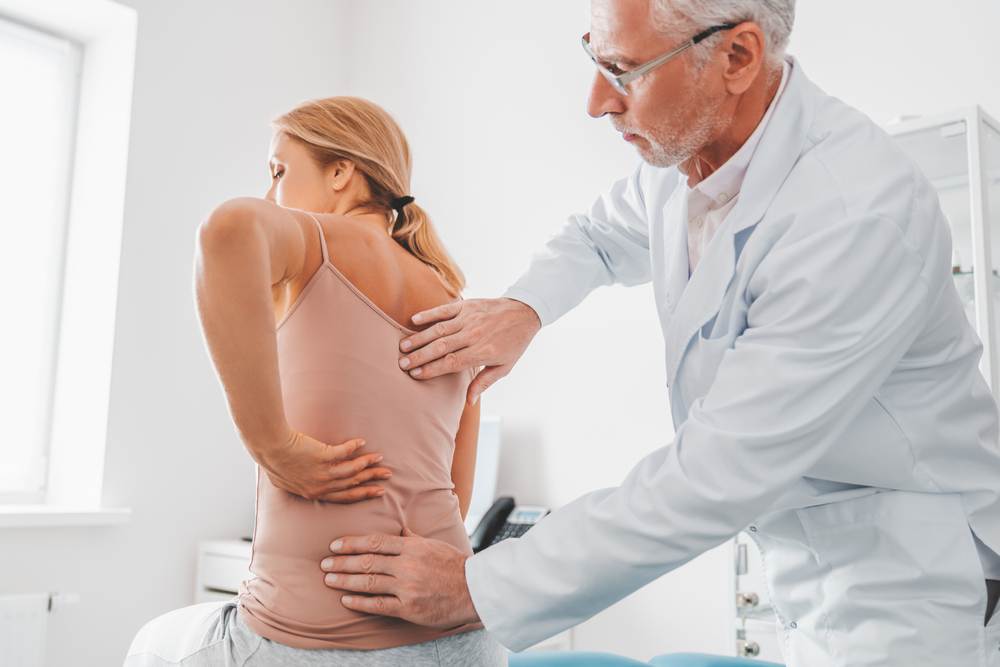 Around 7 million traffic accidents occurred in 2019 alone, and those numbers have been rising steadily as statistics for 2020 and beyond revealed an uptick in motor vehicle crashes. Of those millions of accidents, a significant number ended in injury for one or more involved parties. If you have been in a car accident, you have about a 1 in 4 chance of sustaining an injury.
Around 7 million traffic accidents occurred in 2019 alone, and those numbers have been rising steadily as statistics for 2020 and beyond revealed an uptick in motor vehicle crashes. Of those millions of accidents, a significant number ended in injury for one or more involved parties. If you have been in a car accident, you have about a 1 in 4 chance of sustaining an injury.
The following scenario often occurs: you endure a car accident and are grateful to walk away relatively unscathed. However, a few hours or even days pass by, and you realize you are experiencing pain that was not there before. You were fine after the crash, so what is going on? Could you be injured?
This series of events happens so frequently that medical professionals recommend seeking medical care after being in a traffic accident, even if you don’t notice any symptoms at first. Their argument is that it is better to be safe than sorry. After all, between police reports, insurance claims, and visits to the garage, the hassle of dealing with the aftermath of a car accident is stressful enough without the added difficulties of managing an injury. It can be harder when symptoms are delayed because you may feel tempted to “wait it out.” But if you do so, one of many possible conditions could go untreated and result in complications.
Types of Back Injuries
Whether they result in a minor fender bender or a totaled car, the fact is that all car accidents are traumatic to some degree. Such life events are correlated with a higher rate of chronic pain and tension in the neck, shoulders, and back. If you are experiencing pain in your back after being in a car accident, it is certainly possible that this tension is at the root. Even so, it is also certainly possible that more serious complications could be causing your pain. It is important to seek medical attention to rule out the possibilities of any of the following conditions.
Fractures
The trunk of your body – that is, from your shoulders to your hips – is where most of your most important organs are situated. Your body’s natural protection for these organs is the rib cage and spinal column. These bones ensure that the lungs, heart, liver, stomach, spine, and other organs are protected from harm.
In a car accident, the impact on your body puts these bones at risk. They are liable to break or be crushed. There are 24 ribs and 33 bones in the spinal cord, making up 67 opportunities in all to suffer a fracture as a result of a car crash.
Fractures can be small and nearly undetectable except via x-ray, but it is also possible that the bones can snap or shatter in a way that puts your spine or lungs severely at risk. A lung puncture can affect your ability to breathe and can be fatal if emergency medical attention is not administered as soon as possible.
Spondylolisthesis is a condition related to spinal fractures. It occurs when a vertebra is displaced due to a fracture. The affected vertebrae may move and compress the nerves along your spine, leading to pain, weakness, and limited movement.
A medical professional can order an x-ray for you, which will allow them to see your skeleton. Diagnosing fractures is otherwise very difficult, so it is important to visit a doctor if you suspect such an injury.
Sprains & Strains
If you have ever “pulled” a muscle, you have experienced a strain of the tendons that connect your muscles to the skeleton. On the other hand, a sprain is when the ligaments connecting the joints are injured. Both are common car accident injuries. They can be annoying to deal with, and if left untreated, you may become more vulnerable to repeat the injury, with worse symptoms.
Facet Joint Injuries
These joints are positioned between the bones of your spine and act as a conduit for some of the nerve roots that make paths toward different areas of your body. These joints allow you to move your body without injury to your spine. If there is an injury to one of your facet joints, that protection for your vulnerable nerves could be lost, and you will experience nerve pain. You may also experience muscle spasms, tenderness if light pressure is placed on the back, and radiating pain down a limb.
Herniated Discs
Another common spine-related car accident injury is a slipped or herniated disc. The spine contains 33 vertebrae, also known as discs, each of which is protected by an outer layer called the annulus. If the annulus is damaged, it may reveal the spongy material that acts as shock absorption for your body. This is a painful condition that may be referred to as a slipped, bulged, or ruptured disc, as well as a herniated disc.
The symptoms of herniated discs may depend on which part of the spine is affected. The most common symptom is sciatica, characterized by pressure on the sciatic nerve that causes pain in your lower back, buttock, and down your leg. Other symptoms of herniated discs include numbness or tingling, weakness, pain, and reduced reflexes.
Discogenic Pain
Often confused with herniated discs, discogenic pain is a result of damage to a disc but is usually related to disc degeneration. Therefore, herniated discs are a form of discogenic pain, but not all discogenic pain is related to a herniated disc.
In at least one study, discogenic pain was diagnosed in over half of the survivors of a motor vehicle collision. It is possible to have a degenerative disc disorder that does not make itself known until some form of trauma causes just enough movement of the disc. Car accidents can often be this catalyst, causing an already weak disc to break open and for disc pain to occur.
Delayed Pain
Late onset pain can occur after a traumatic experience. It can come on gradually or suddenly and can last for a long time or disappear fairly quickly. This is due in part to the role that the endocrine system plays in moments of heightened stress. During an event like a car accident, your body releases endorphins and adrenaline into the bloodstream. Together, these chemicals work as natural painkillers. Depending on the event, it can take a while for the effects of those chemicals to recede, making it difficult to recognize the existence of an injury.
Additionally, some injuries may start out as undetectable in the hours after the accident occurs, but as you move around and use your body, the injury may worsen. A problem that you may not have noticed before becomes harder to ignore.
Dealing With Delayed Back Pain
Diagnosis
 If you follow recommendations, you should have visited a doctor immediately after your accident, even if you did not notice an injury right away. If that doctor cleared you before you began experiencing the pain, or if you have not yet seen a doctor, do so immediately. You will want documentation that you sought a diagnosis, in case such documentation is necessary for your insurance claim.
If you follow recommendations, you should have visited a doctor immediately after your accident, even if you did not notice an injury right away. If that doctor cleared you before you began experiencing the pain, or if you have not yet seen a doctor, do so immediately. You will want documentation that you sought a diagnosis, in case such documentation is necessary for your insurance claim.
Your doctor will ask a series of questions and may ask you to move in specific ways. The movements will help them pinpoint the ways that your injury is affecting you and can even help them figure out which nerves are affected, if you have a nerve-related injury. The doctor may also require imaging, using x-rays, magnetic resonance imaging (MRI), or a computer topography (CT) scan. Each of these tools will help the doctor “see” some of the systems in your body to help determine where an injury has occurred.
Treatment
After making a diagnosis, your doctor will develop a treatment plan to address your pain. There are several common treatments that doctors recommend.
Medication
Most doctors recommend the use of over-the-counter pain medication such as non-steroidal anti-inflammatory drugs (NSAIDs) as a starting point for managing pain. These are often times quite effective, but some patients may require something stronger. In such cases, your doctor will take your current level of health, any medications you regularly take, and your medical history to identify a drug for a prescription.
Physical Therapy
 A minimally invasive but highly effective treatment, physical therapists help you towards your goals of recovery. With regular physical therapy, as well as practice at home, you can regain your strength, mobility, and flexibility. Physical therapists take your individual needs into account as they combine passive treatments like massage with active treatments like specially designed exercises and stretches to target your injured area.
A minimally invasive but highly effective treatment, physical therapists help you towards your goals of recovery. With regular physical therapy, as well as practice at home, you can regain your strength, mobility, and flexibility. Physical therapists take your individual needs into account as they combine passive treatments like massage with active treatments like specially designed exercises and stretches to target your injured area.
Chiropractic Care
Most people understandably want to avoid surgery or other invasive methods of dealing with pain. Others want to ensure that the pain they are experiencing never returns. Both are just some of the benefits of adding chiropractic care to your treatment plan. If you have recently been in a car accident and are curious about how a chiropractor can help with your delayed back pain, call AICA Conyers today.
